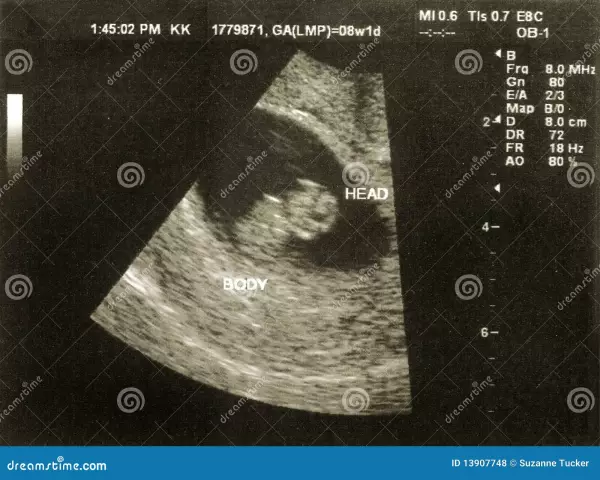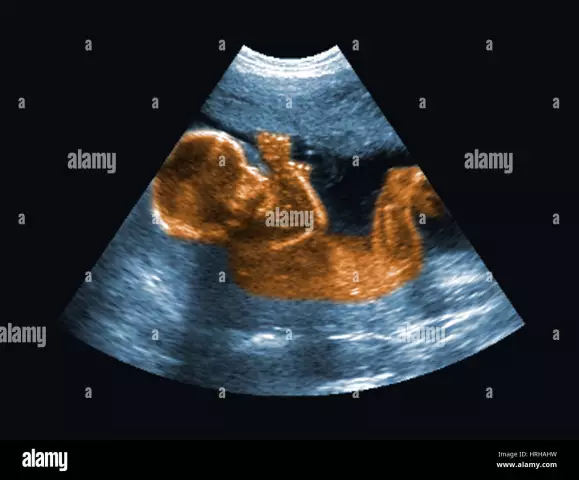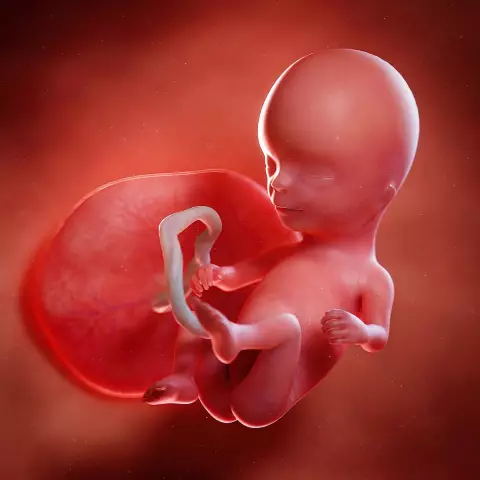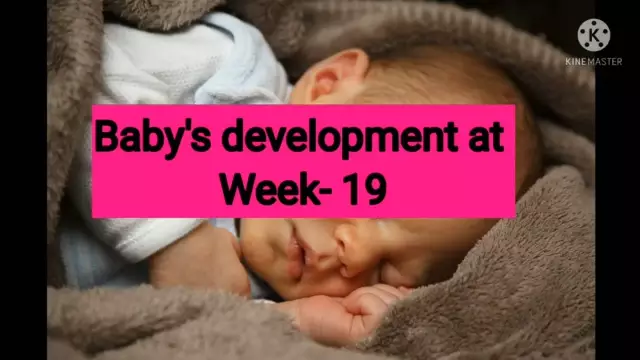- Author Rachel Wainwright [email protected].
- Public 2023-12-15 07:39.
- Last modified 2025-11-02 20:14.
33 weeks pregnant

At 33 weeks of gestation, the unborn baby is already 31 weeks old from the moment of his conception, the ninth lunar month of pregnancy begins.
Changes in the fetus
If you do an ultrasound scan at 33 weeks of pregnancy, you can determine the size of the unborn child. Its length is about 41 - 42 cm, it weighs from 1800 to 2200 g. Within a few weeks, the child's weight gain will be quite intense.
All organs and systems of the fetus at 33 weeks of gestation are already formed, they only need to mature functionally. But even by the time of urgent delivery, maturation will not be complete enough, and the child will improve during the entire first year. Already, the capabilities of the fetus' body allow it to survive in the event of premature birth at 33 weeks of gestation, only this requires special conditions for nursing.
At 33 weeks gestation, the size and mass of the fetal brain increases, and many new nerve connections are established in it. The cerebral cortex becomes more mature, new convolutions and furrows appear. At 33 weeks of gestation, myelination is intense - the formation of a protective sheath of nerve fibers, due to which impulses are transmitted only to the destination, not spreading around.
A fetus at 33 weeks gestation can smell and taste. In his lungs, more and more alveoli are formed, but the amount of surfactant may still be insufficient for spontaneous respiration during premature birth.
According to ultrasound at 33 weeks of gestation, it can be seen that the fetal body has become proportional and more like a newborn. Despite the compact embryonic position, he still felt cramped in the uterine cavity, so his movements are felt in the abdomen at 33 weeks of gestation less often, but have become stronger. The fetus spends quite a lot of time in a dream, but the absence of movements for 12 hours is a dangerous prognostic sign for further pregnancy.
The vellus hair - lanugo - gradually disappears from the skin, and on the head it becomes longer and more noticeable.
At the 33rd week of pregnancy, the unborn child already takes its permanent position. The optimal position is the head down, but there may be variations such as the pelvic, foot, and even transverse presentation. In order for the fetus to take the correct presentation, the doctor recommends a set of special physical exercises for a woman. For this, it is also desirable to sleep mainly on the left side.
Changes in a woman's body at 33 weeks of gestation
In a horizontal position, the uterus in the abdomen at 33 weeks of gestation compresses the inferior vena cava, making it difficult for blood to flow from the legs and flow to the heart. Because of this, a woman feels discomfort, dizziness and weakness when lying on her stomach. The height of the standing of the fundus in the abdomen at 33 weeks of gestation is about 33 cm above the bosom.

Weight gain at this stage of pregnancy can normally reach 400 g per week. If body weight increases at a faster rate, then most likely this is due to latent edema as manifestations of late gestosis.
The uterus regularly tenses and relaxes in preparation for the upcoming labor. Usually, these contractions are irregular and do not cause pain at 33 weeks of gestation. The regularity of contractions or the feeling of a stone abdomen are unfavorable and are regarded as the first symptoms of preterm labor.
An abundant liquid discharge at 33 weeks gestation is most likely amniotic fluid. This can be confirmed or excluded using special test strips. Normally, discharge at 33 weeks of gestation is light or transparent, odorless or slightly sour.
Examination at 33 weeks of gestation
The doctor sends a woman for an ultrasound scan at 33 weeks of pregnancy if she has not done it before this period, at 30 - 32 weeks. If necessary, it is possible to conduct cardiotocography, with the help of which it is possible to assess how the fetal contractions change in response to the muscle tension of the uterus.
YouTube video related to the article:
Found a mistake in the text? Select it and press Ctrl + Enter.






